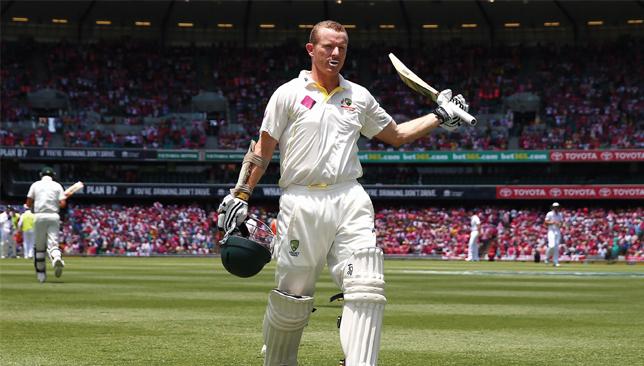
Recently, Australia batsman Chris Rogers pulled out of a domestic game where pink balls were being used to test their viability for possible international usage. The reason was simple – Rogers is colour blind.
That means his ability to track the pink ball is rather iffy. He decided to excuse himself from the match rather than knowingly put himself on a sticky wicket.
There are some concerns that his decision would have an adverse impact on his career.
With administrators around the world looking into the use of pink balls in an effort to make day-night Tests a possibility, the left-handed batsmen’s decision is being seen, in some quarters, as a negative one.
Even though Cricket Australia has assured that Rogers won’t be assessed on the basis of one match, there will still be many who will judge him.
Cricketers, or sportsmen, are expected to be of a certain mould and have a set of physical attributes. And when we come across some who have a form of handicap, we tend to brush them off as incapable of making the cut at the top level.
Now obviously if an up and coming batsman has poor vision or a bowler lacks in physical strength, he can’t hope to be a star. But there have been cricketers who were a bit odd, had some defect but somehow didn’t let that stop them from delivering on the field.
Cricket has many such examples. West Indies batsmen Lawrence Rowe was one. He was one of the hardest hitters of the ball in the 1970s and 80s. The Jamaican scored 2047 runs from 30 Tests, with seven 50s and as many centuries. All this, with problems in his vision and allergy to grass. Just imagine how a cricketer allergic to grass must have earned his livelihood.

Then there was India leg spinner Bhagwat Chandrasekhar. An attack of polio left his right arm weakened, but he didn’t let that turn into a disability. As he was forced to bring his bowling arm down quicker than other bowlers due to his lack of full control over it, his leg breaks, googlies and top spinners had that extra bite that made him unplayable at times. In 58 Tests, he scalped 242 wickets and was, for a long time, India’s best match winner overseas.
South Africa’s Jonty Rhodes made an entire career out of fielding brilliantly at one position in the field – backward point. A legendary athlete, Rhodes revolutionised fielding in ODIs and took running singles to a new level. So good was he as an athlete, he even qualified to be a part of the Olympic hockey team. Rhodes managed all that while suffering from epilepsy. Though his ailment was not severe, he played with the possibility of having a seizure any time in the field.
Last year, Pakistan wicketkeeper batsman Umar Akmal suffered a seizure while travelling to Jamaica.
Though it isn’t known whether he suffered an attack earlier as well, the fact is Akmal, a crucial member of the Pakistan team, will have to live with the fact that he might get a seizure any time. Obviously, regular medication should keep it in some sort of a check.
Then we have the astonishing case of Chris Gayle. Yes, the swashbuckling, six-hitting, crowd pleasing Gayle. Before he became a Twenty20 superstar, Gayle battled his way across international cricket with a congenital heart defect, which saw him suffer regular bouts of irregular heartbeats. Those who followed Gayle’s career in the pre-IPL era remember him walking off the ground in the middle of his innings on multiple occasions, with no apparent injury. Only later would the commentators confirm that it was another case of irregular heartbeats. Gayle underwent corrective surgery in 2005 and his career has stabilised after that. But for the first six years of his international career, he played with that heart condition.

Obviously, this doesn’t mean that every cricketer with some sort of a ‘defect’ can be seen as a potential talent. There have been cases of players having deficiencies, or suffering from them over a period of time, which has proven to be too acute to overcome. The prime example being Virender Sehwag.
The India opener built his whole career on immaculate timing and an outstanding hand-eye co-ordination. But over the past few years, his eye sight has deteriorated and that has resulted in a steep fall in form as he doesn’t have any classical technique to fall back upon. His see ball, hit ball strategy was missing one critical ingredient and he has since lost his place in the team.
But still, players like Rogers should derive a lot of confidence from the fact that there have been many players who have overcome much more difficult challenges. Maybe it even drives them to put in that much extra effort to compensate. It takes a lot of dedication and an exemplary level of patience to tune out all the negative views. If a player manages to come through all that, rest assured he is made of stronger stuff compared to ‘normal’ cricketers and will last longer.